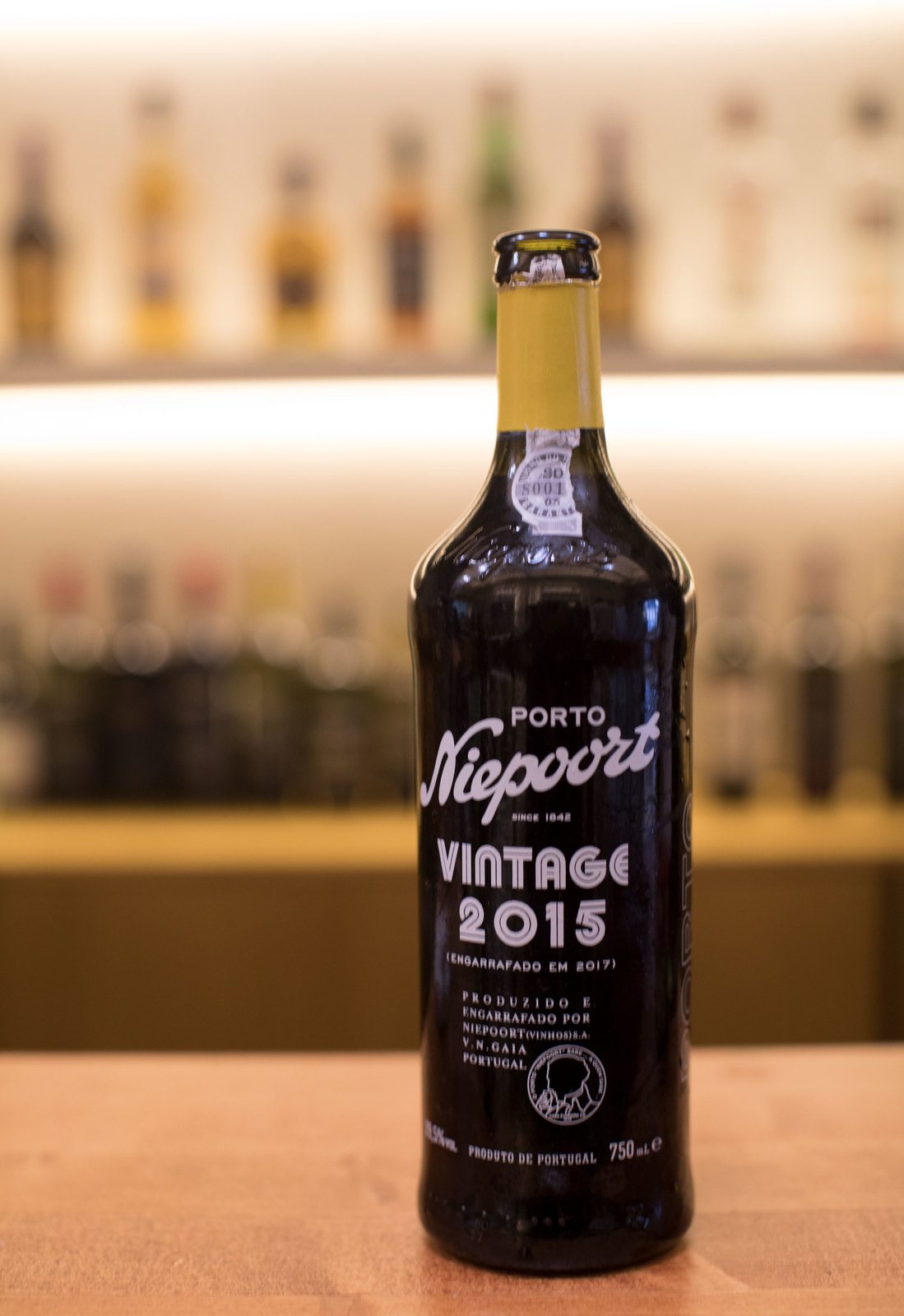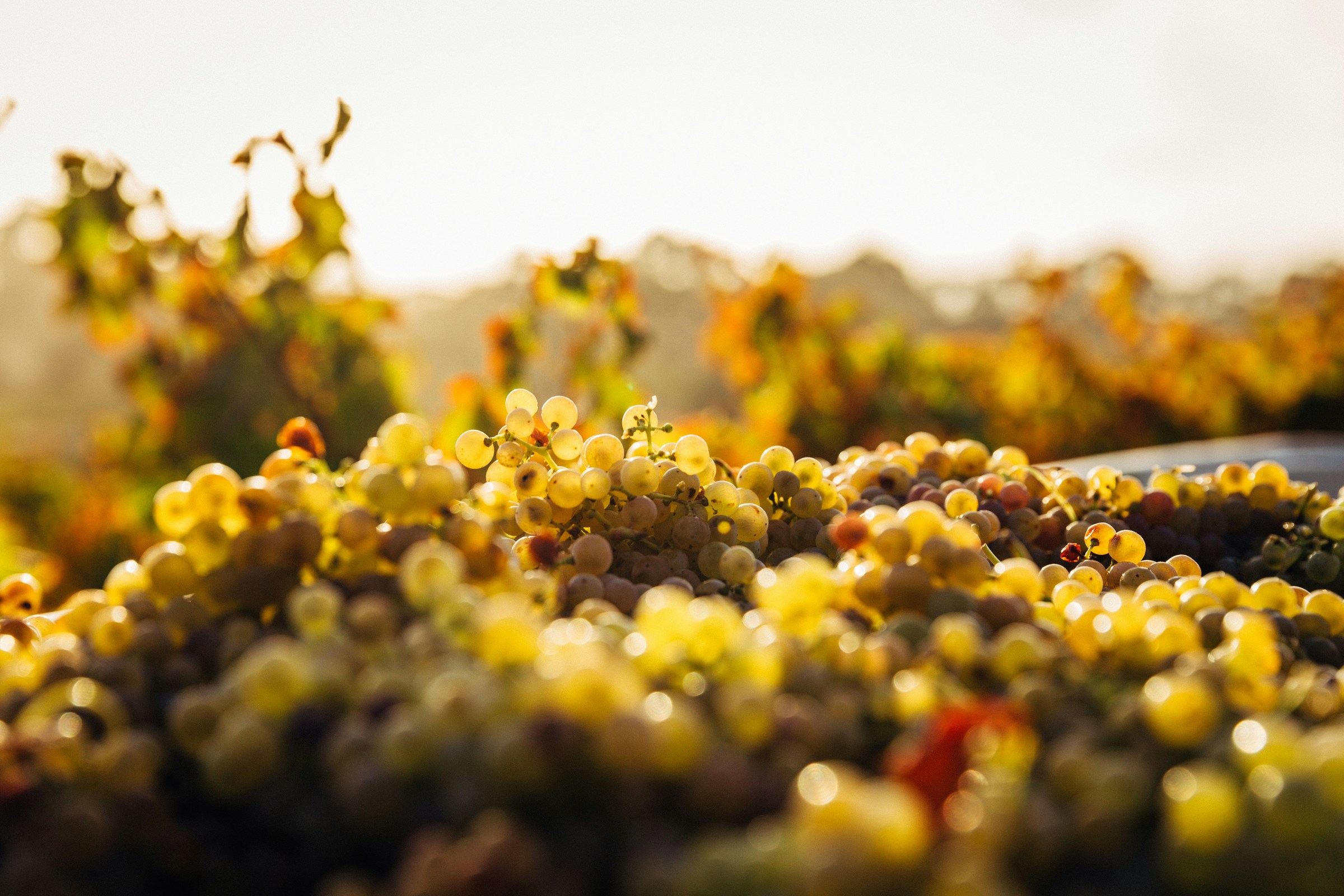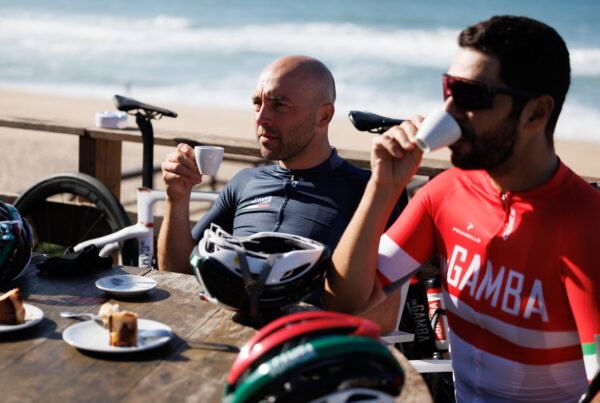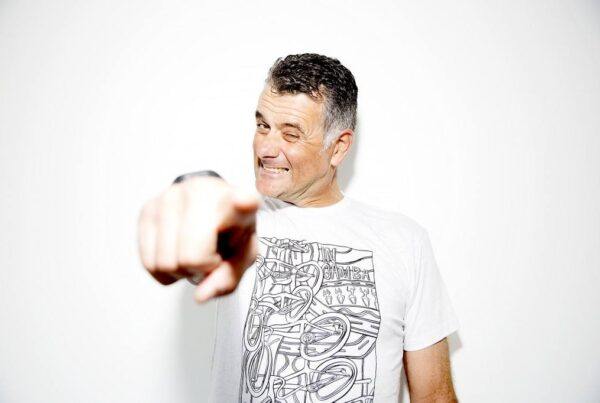We’re on a modest street in Matosinhos, a port city just north of the Douro river that these days has been swallowed up by Porto’s urban sprawl. It’s a working-class neighborhood, and walking down the Rua Roberto Ivens, an unremarkable little cobbled thoroughfare not far from the waterfront and the docklands of the Port of Leixões, it’s hard not to feel like we’ve taken a wrong turn somewhere.
The road is lined with old terraced buildings, some of which have collapsed in the back, leaving only the facades. Others are clad in traditional Portuguese tiles, many of which are chipped or faded. Where there is paint on the walls, it’s peeling, and almost all of the plasterwork is cracked. We pass a lot of people dressed smartly and clearly hurrying to an office somewhere, but this corner of town feels a little unloved. There are some cafes, complete with laminated pictures of food in their windows, shops selling electrical supplies and auto parts, and a couple of bars and night clubs with salacious signs outside, but little to suggest we’re in the right place for some fine dining. Shows what we know.
Dirk Niepoort is waiting for us at Restaurante O Gaveto at the end of the road, opposite a high-rise car park. There’s no noticeable signage and if you weren’t paying attention, you might miss it on first passing, but on closer inspection, the weathered metal and glass frontage hints at the smart and stylish looking eatery that’s just behind. Inside, the décor is mostly white, with an open plan dining room and double-height ceilings that create a great feeling of space and an atmosphere that’s relaxed, while still clearly being serious. There’s fresh fish on display, and a table full of wines that someone has selected with great care, and it’s clear that the focus here is on epicurean, rather than extraneous, detail.
We’re late, and while they’ve kept us some seats, lunch has begun. The table is full of anchovies, sardines, goose barnacles, seafood rice, clams, bacalhau. And glasses. A lot of them, being emptied and refilled at pace, as our hosts eagerly open bottles and compare notes. It turns out that Dirk isn’t the only winemaker at the table. He’s brought his friends, and we’re being treated to a crash course in the best of Portuguese wine by the country’s viticultural VIPs. Much like the restaurant, Niepoort’s appearance is unassuming, and the dark blue shirt he’s wearing, sleeves rolled up, under a weathered and worn-in cargo vest, gives him the utilitarian, hands-on look of a craftsman. It’s at odds with the more formal attire of his friends, and yet somehow, it doesn’t look out of place.
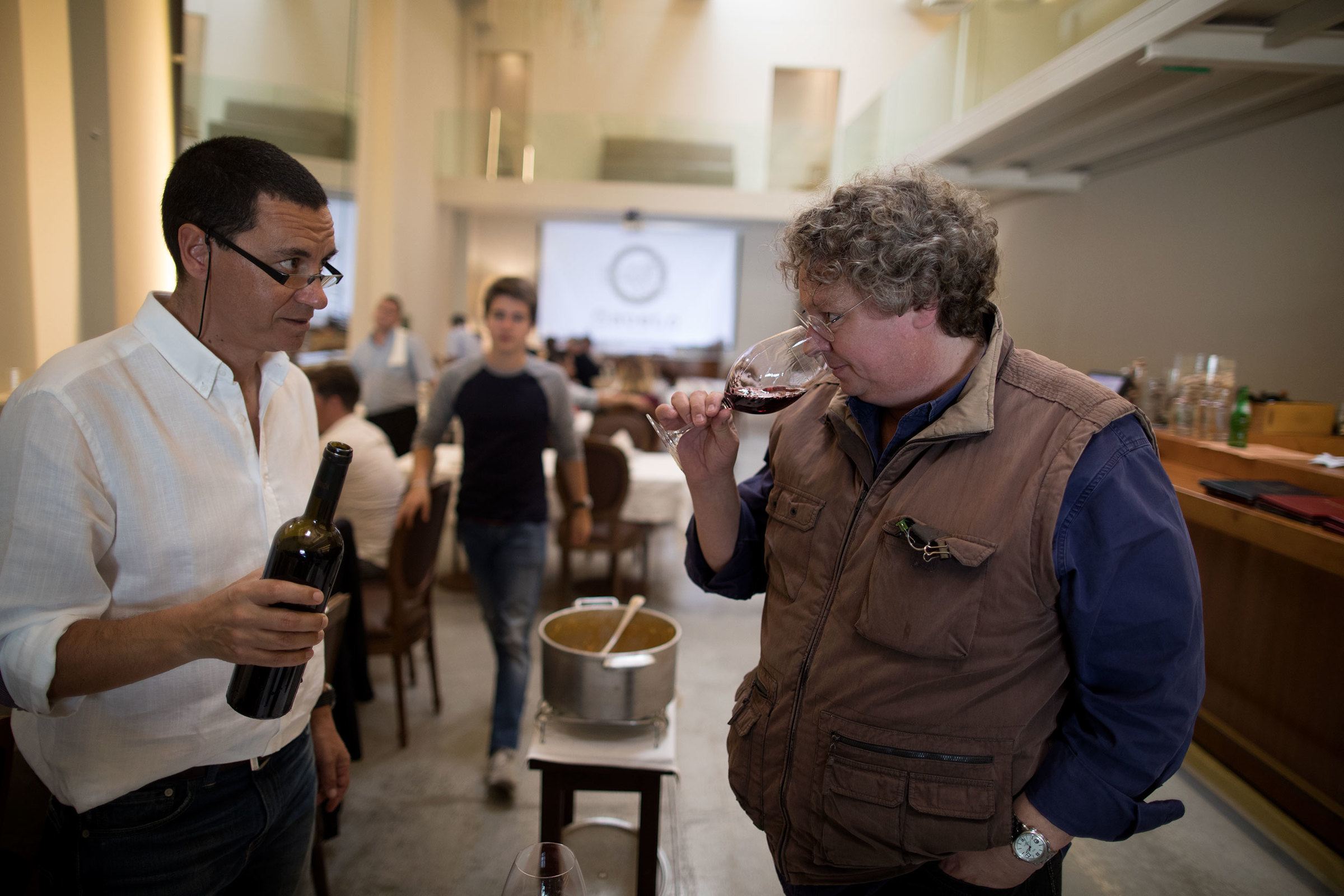
Niepoort, as you’ve no doubt already noticed, isn’t a Portuguese name. Francisco van der Niepoort came to Portugal from Holland in 1842. In a place that has its roots in Celtic settlements around 300BC, that makes the family relative newcomers. But in the context of modern Porto, a seafaring city that faces out to the world and has always had a history of both immigration and emigration, the Niepoorts are an indelible part of what makes this place special. Their name has come to represent the best of port, arguably the region’s most important export, and something that is perhaps better known worldwide than many of the city’s modern attractions.
After all, they arrived some 44 years before the iconic Dom Luís I Bridge was completed to span the Douro river, five decades before the city’s famous soccer club had first kicked a football, or its iconic tramlines had begun navigating through its narrow, winding streets, and a full century before the invention of the Francesinha, a humble sandwich that many natives point to as a drool-inducing, meat-filled and gravy-covered symbol of their home town. Dirk’s complexion and his accent are still northern European, but both his family and their company are deeply woven into the fabric of contemporary Porto.
Since taking the reins from his father in late 1990s, Dirk has developed the Niepoort estate into one of the most respected and innovative wine brands in the world, branching out from their traditional port offerings to expand and improve their wine range, with the aim of redefining what a wine from the Douro valley can be. At first, that met with some resistance and unfavorable reviews, but it doesn’t take long in his company to know that Niepoort isn’t the type to spend much time worrying about the opinions of others. He stuck to his convictions, and in time, those opinions changed. So too did expectations. What was once considered to be a region poorly suited to the production of high-quality wines is now creating some of Europe’s best. Farther from home, Dirk is also busy with a new project based in the Mosel, Germany’s oldest wine-growing region, alongside his son Daniel and a German winegrower. He describes these wines, all variations of Riesling, as dry and deliberate. You could use the same words to characterize the winemaker’s conversation.
“I don’t really give a shit about the wine journalists. An article just came out, and one of our wines was among the last in the wine ranking, but I think it’s one of the best wines ever made in the Douro. The journalists are important, but I don’t run after them, and I don’t care about the points. In fact, I don’t like it. I think it’s a very American thing, to try and define ‘the best.’
“I’d rather build up our reputation organically, and then when everything else is in place, the points can be helpful. But if they come too soon, they just distort everything. You get people who don’t know a thing about wine, buying it because they’ve seen the score someone gave it. And if you don’t get the same points the next time, they stop buying it. So you become totally dependent on that system, which I think is destroying how we think about wine. There’s one journalist here, he’s a good friend of mine, and he’s openly saying bad things at the moment about our 2015 Batuta, provoking my people, joking about it, but if he tries it with me, it doesn’t work. I don’t care. My general manager was upset about it, he thought something had gone wrong, but I said, ‘No, they just taste differently. And that’s ok.’ This work requires a lot of attention to detail, and we’re always fine-tuning.”
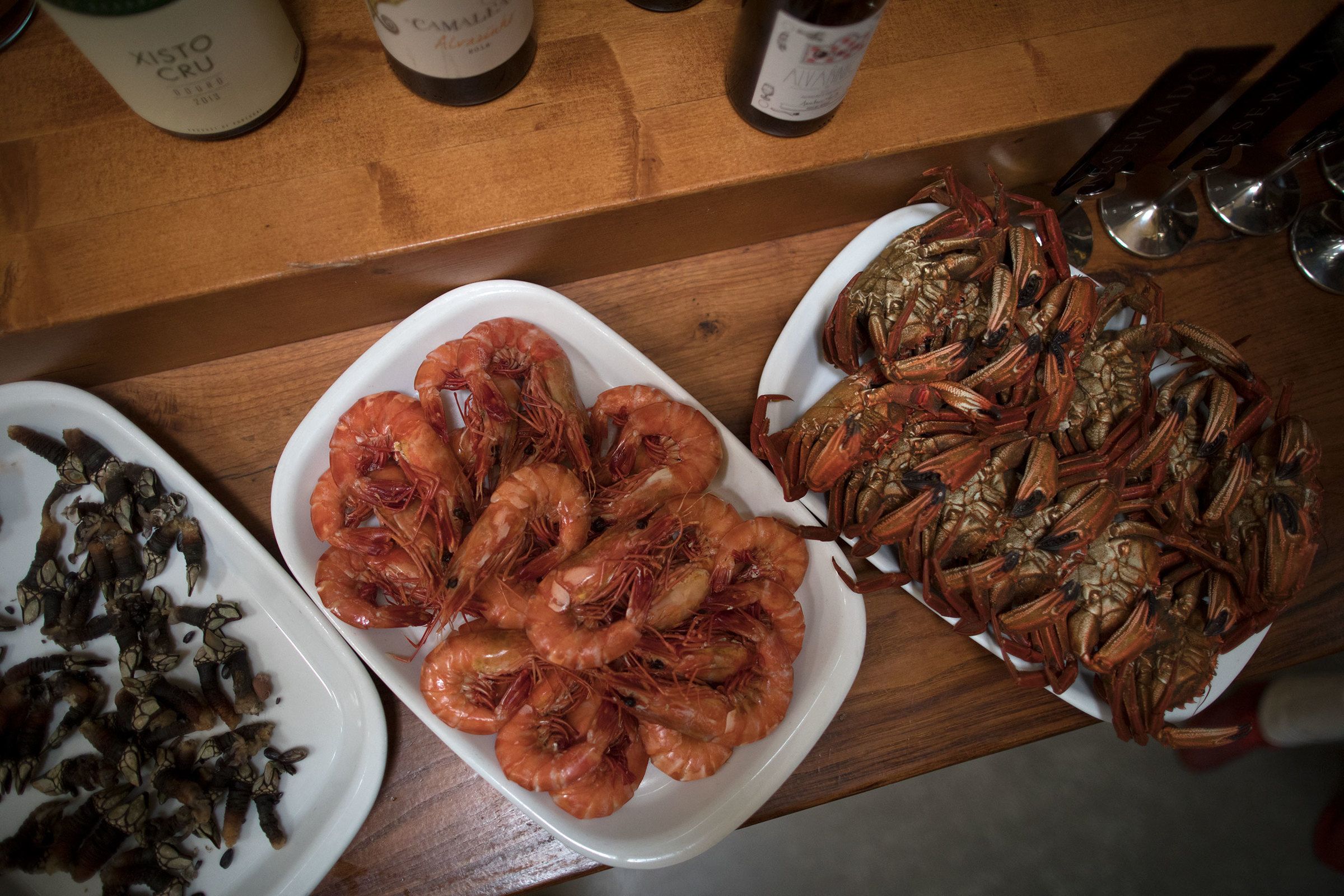
It’s nice to imagine that the fine tuning takes place in settings such as this one, with glasses being passed around between friends, without any of the ceremoniousness or solemnity that all too often ruins a good wine tasting. It all happens with speed, and there’s no room for bullshit. A wine’s weaknesses are noted as openly as its strengths. As its what we’re currently drinking with the food, the conversation turns to table wines, and Dirk’s exasperation at the industry’s obsession with seriousness. The word “fun” is used a lot to describe what he thinks a wine should be. His idea of a good one is something that goes well with friends and long conversation, without stealing the show. Some of those on the table are so good that they can’t help grab your attention, the Turris, in particular. Hailing from one of the family’s oldest vineyards, the grapes had for years been used to add complexity and depth to their other wines, before being allowed to express themselves solo, in 2012. The result is a genuinely unconventional wine that leaves a lasting impression.
“When I started, they thought I was crazy. No one was doing it. Some people made wine, but there was only one famous Portuguese red, Barca Velha, and it wasn’t even labeled as Douro. It’s strange to say now, that I was one of the first, because today everyone makes wine in the Douro. The wine side has become very important – 70 per cent of our sales. Our company used to be insignificant compared to the big names like the Symington Family, and in a way, on the port side, we still are. But when it comes to wine, we’re bigger than them now. That’s been a big change.”
On that note, there’s a change at the table, too. The plates are cleared and in an instant, a new array of bottles appear. The selection of modern, progressive reds give way to tradition, to the fortified vinho do Porto that first made the Douro famous. There’s a selection of Niepoort’s finest, along with a 1980 Vintage from Warre’s. The star of the show comes courtesy of the man from Symington, who has brought a bottle of Graham’s colheita from 1882, a port from the year that Andrew Symington first arrived in Portugal. Having the luxury of trying them all alongside one another, even we, neophytes, begin to appreciate just how wonderfully complex a thing is port.
“Port is like the English language,” offers Dirk. “It’s the easiest to learn, but the most difficult to understand. There is so much nuance. To speak English is simple, but to really understand an Englishman, with his double and triple meanings, it’s very tough. This is what port is all about. It’s not hard to make, but to make it perfectly? Almost impossible.”
–
This article originally appeared in our 2018 Magazine as “Getting to know Niepoort,” by Colin O’Brien.
